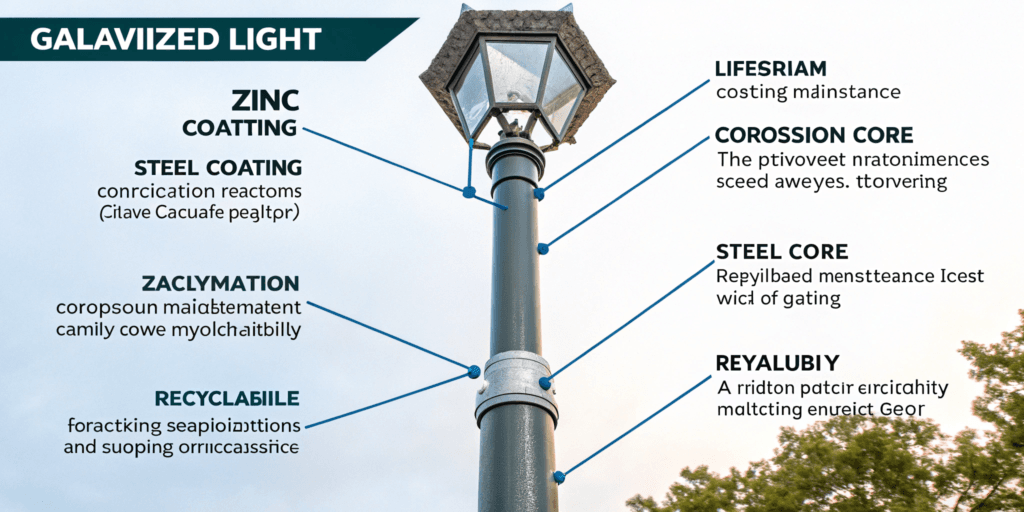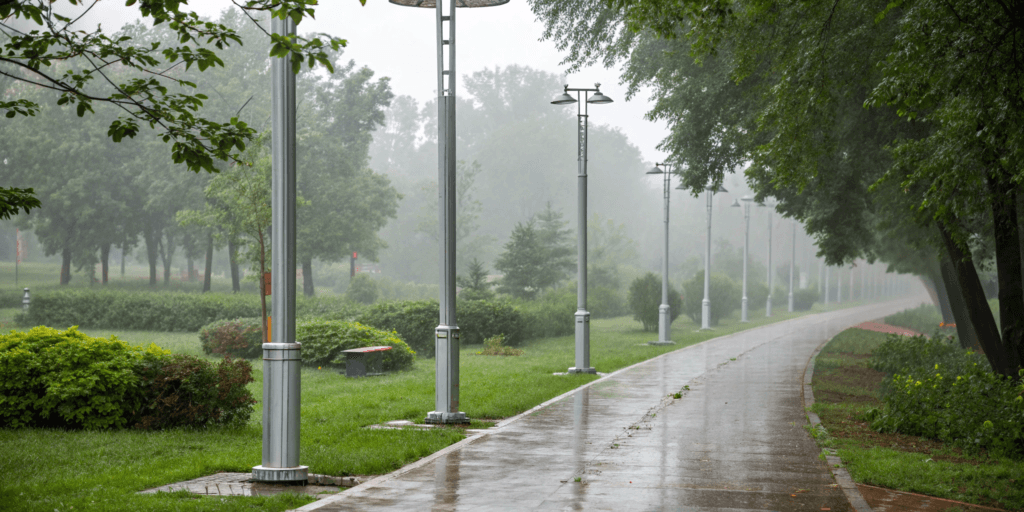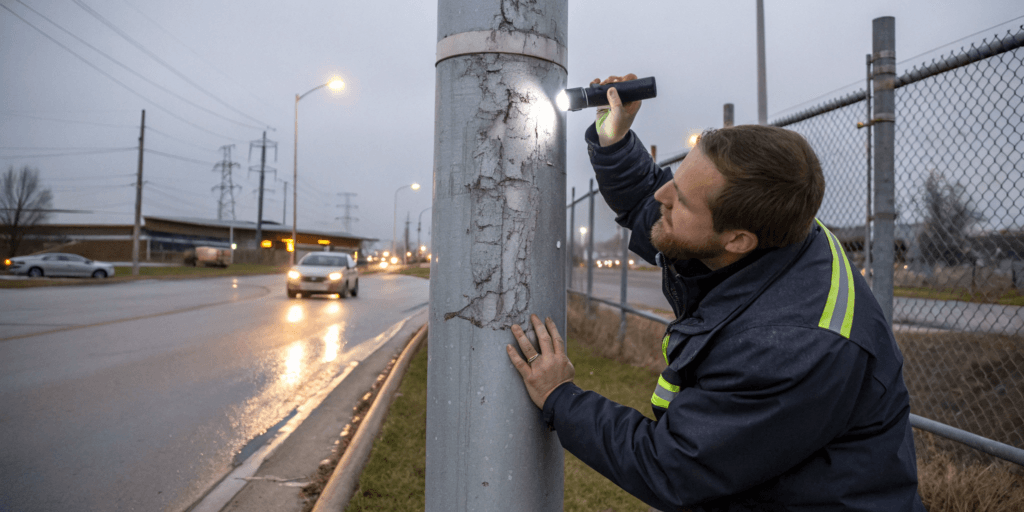Rain, humidity, and pollution attack your street light poles every day, weakening them over time.
A galvanized street light pole uses a zinc coating to fight corrosion, improve safety, and last decades.
If you’re planning a long-term lighting project, understanding galvanization could save you serious time, money, and maintenance headaches.
What Is a Galvanized Street Light Pole?
Street poles look strong, but untreated steel can rust fast—especially outdoors.
A galvanized pole is a steel pole coated with zinc to protect against corrosion and environmental damage.
Here’s how galvanization works:
-
Hot-Dip Galvanization (most common):
The pole is cleaned, dipped into molten zinc (around 450°C), and coated entirely—inside and out. -
Electro-Galvanizing or Zinc Spraying (alternatives):
These use electric current or spray application to add zinc, but don’t protect internal surfaces as well. -
Zinc’s Role:
Zinc acts as a sacrificial layer—it corrodes first, keeping the steel underneath intact.
This method creates a metallurgical bond, much stronger and longer-lasting than paint.
Why Galvanization Matters for Street Light Poles?
Rust can turn a strong pole into a safety hazard within years.
Galvanized poles resist corrosion, last longer, and require less maintenance—saving time and money.
Let’s break down the key benefits:
-
Corrosion Resistance:
Perfect for areas with rain, humidity, or salt in the air (like coastal cities). -
Extended Lifespan:
Galvanized poles typically last 25 to 50+ years, far beyond painted or untreated poles. -
Safety and Strength:
Keeps structural integrity strong over time. No rust means no weak spots. -
Lower Maintenance Costs:
No need to repaint every 3–5 years. Just inspect and clean occasionally. -
Sustainability:
Zinc and steel are recyclable. Plus, fewer replacements = less waste.
Galvanized vs. Non-Galvanized Street Light Poles
Want to see the difference side by side?
This table shows why galvanized poles are the smarter long-term choice.
| Feature | Galvanized Pole | Non-Galvanized Pole |
|---|---|---|
| Corrosion Resistance | High | Low |
| Maintenance Needs | Minimal | Frequent (painting, repair) |
| Initial Cost | Slightly higher | Lower |
| Lifetime Cost | Lower (fewer replacements) | Higher (frequent maintenance) |
| Ideal Use | Outdoor, coastal, high humidity | Indoor or temporary use only |
Where Galvanized Poles Are Most Commonly Used?
Some environments practically demand galvanization.
Galvanized poles are used wherever outdoor conditions threaten metal with corrosion.
Common use cases:
- Coastal cities with salty air
- Urban highways exposed to vehicle emissions
- Public parks and pathways with rain and humidity
- Industrial zones with chemical exposure
- Long-term infrastructure projects (bridges, expressways, tunnels)
In these places, using non-galvanized poles means more maintenance and faster replacements.
Standards & Specifications for Galvanized Poles?
Not all galvanized poles are created equal.
International standards ensure the zinc coating is thick, even, and reliable.
Key standards include:
-
ASTM A123 / A153 (USA):
Hot-dip galvanizing of steel products and fasteners. -
ISO 1461 (International):
Covers batch hot-dip galvanizing for general steel components. -
BS EN ISO 1461 (UK & EU):
British and EU regulations for consistent coating and quality. -
Local Codes:
Municipal or government agencies often add specs based on climate and safety requirements.
Always ask your supplier for certification and test reports. A galvanized pole is only as good as its coating process.
Common Misconceptions About Galvanized Poles?
I’ve heard a lot of myths from clients over the years.
Many people confuse galvanization with painting or think it’s not worth the cost—it is.
Let’s clear up the top 3:
-
“Galvanization is just painting.”
False. Paint is a surface coat. Galvanizing creates a chemical bond between zinc and steel. -
“It’s too expensive.”
False. It costs a bit more upfront, but saves on repainting, repairs, and replacements long-term. -
“It still rusts quickly.”
Only if the coating is scratched, cut, or poorly applied. Proper hot-dip poles resist corrosion for decades.
Maintenance Tips for Galvanized Street Light Poles?
These poles are low-maintenance—but not maintenance-free.
A few checks each year keep galvanized poles working perfectly for decades.
Here’s what I recommend:
-
Inspect for damage:
Look for dents, deep scratches, or welding marks that may have removed the zinc layer. -
Avoid harsh chemicals:
Clean with water or mild soap. Acidic or alkaline cleaners can damage zinc. -
Touch-up when needed:
If you drill holes or weld after installation, use zinc-rich paint or spray to seal exposed steel. -
Check bolts and fittings:
These should also be galvanized—or stainless steel—to avoid galvanic corrosion.
Conclusion
Galvanized street light poles offer unmatched protection against corrosion, delivering long life and low maintenance.
They’re a smart choice for outdoor projects—especially in humid, coastal, or industrial areas. If your project requires durability, safety, and long-term savings, galvanization is absolutely worth it.





